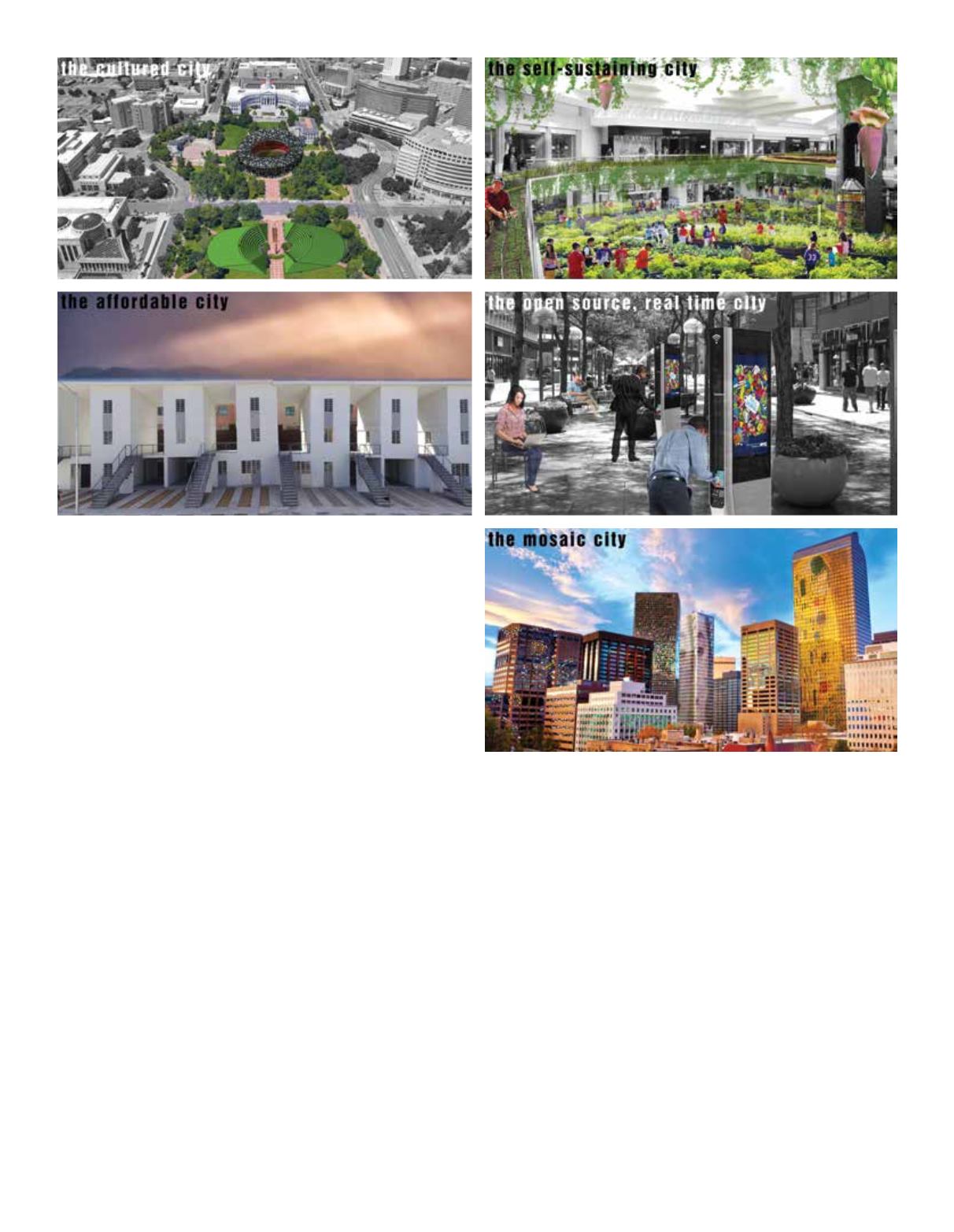

JUNE 2017 \ BUILDING DIALOGUE \
67
and business districts? And why not utilize blank or window-
less building facades as climbing walls?
Image3:
To take this idea on step further, onemight look at the
Dutch company SolaRoad. SolaRoad has developed and tested
the first functional road and bike path that doubles as a solar
panel. The U.S. currently has 2.65 million miles of paved road.
With 300 days of sunshine and the National Renewable Energy
Lab located in Golden, how might we think aggressively about
taking advantage of our climate as well as developing afford-
able technologies that might continue to reallocate our city’s
use of varied energy resources?
Image 4:
In terms of the public realm, as the city continues to
densify, there often becomes a redistribution of existing public
vs. private space. One of the more successful models of carving
out public space in privately owned buildings is San Francisco’s
POPOS (Privately Owned Public Open Spaces.) Ranging from
public lobbies to rooftop gardens, could we imagine a network
of vertical public spaces that prioritize urban agriculture, recre-
ation, culture and leisure?
Image 5:
Similar to providing vertical public spaces, the city of
Helsinki employs a “Chief Design Officer” who is championing
the traditional idea of “talkoot” (i.e., the idea that if something
has to be done, let’s do it together). Helsinki’s CDO has imple-
mented this concept through encouraging design gestures
that “humanize cities on any scale.” While there have been
many proposals that reimagine Civic Center Park, the space
remains a critical node in Denver’s urban fabric that would
benefit from strategic, world-class programming.
Image 6:
The city of Cleveland is currently repurposing aban-
doned shopping malls as greenhouses. Sunlight-harvesting
atriums equipped with hydroponic systems create year-round
opportunity for produce that is then sold at a weekly farm-
er’s market. With Denver’s abundant sunlight and continued
shift to ecommerce, this model of suburban farming opens
up many possibilities for how we might think about existing
infrastructure.
Image 7:
Amidst densification, affordable housing continues
to be a hot-button issue. Pritzker Prize winner Alejandro Ar-
avena has proposed “incremental housing” in which govern-
ments fund construction of “half a good house,” with residents
completing the other portion as resources allow. Aravena has
even gone so far to upload Elemental’s most successful hous-
ing designs for free to dissuade developers and government
agencies from believing that they are “too expensive.”
Image 8:
Singapore has created an open source database.
City-dwellers can download real-time information regarding
topics ranging from traffic congestion, electricity usage and
education from 70 public agencies. Part of the goal is to pro-
vide citizens with information that might enable them to seek
solutions that might improve their own lives. Why not em-
power Denver residents to live in a more open source city that
encourages problem solving vis-à-vis the city’s emerging tech
and creative economy?
Image 9:
Much of downtown Denver was developed in the
1970s. Repetitive window modules and bay systems have
turned Denver’s vertical city into a series of mundane grids.
As building owners begin to “reposition” their assets with new
building envelopes as well as brighter, more active remodeled
lobby spaces, could building owners use these repositioning
projects as an opportunity to create a unique, iconic urban im-
age that transforms the quotidian into the artful?
\\
5
6
7
8
9
















